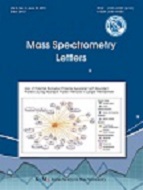
- P-ISSN 2233-4203
- E-ISSN 2093-8950

Microglia are the confined immune cells of the central nervous system (CNS). In response to injury or infection,microglia readily become activated and release proinflammatory mediators that are believed to contribute to microglia-mediatedneurodegeneration. In the present study, inflammation was induced in the immortalized murine microglial cell line BV-2 bylipopolysaccharide (LPS) treatment. We firstly performed phosphoproteomics analysis and phosphoinositide lipidomics analysiswith LPS activated microglia in order to compare phosphorylation patterns in active and inactive microglia and to detect the patternof changes in phosphoinositide regulation upon activation of microglia. Mass spectrometry analysis of the phosphoproteomeof the LPS treatment group compared to that of the untreated control group revealed a notable increase in the diversity ofcellular phosphorylation upon LPS treatment. Additionally, a lipidomics analysis detected significant increases in the amounts ofphosphoinositide species in the LPS treatment. This investigation could provide an insight for understanding molecular mechanismsunderlying microglia-mediated neurodegenerative diseases.
Dheen, S. T.. (2007). . Curr. Med. Chem, 14, 1189-1197.
Streit, W. J.. (2004). . J. Neuroinflammation, 1, 14-.
Kim, S. U.. (2005). . J. Neurosci. Res, 81, 302-313.
Lu, D. Y.. (2007). . Br. J. Pharmacol, 151, 396-405.
McGeer, P. L.. (1988). . Neurology, 38, 1285-1291.
Block, M. L.. (2007). . Nat. Rev. Neurosci, 8, 57-69.
Tufekci, K. U.. (2011). . Parkinsons Dis, , 487450-.
Carson, M. J.. (2006). . Clin. Neurosci. Res, 6, 237-245.
Herbert, M. R.. (2005). . Neuroscientist, 11, 417-440.
Liu, B.. (2003). . J. Pharmacol. Exp. Ther, 304, 1-7.
Boulet, I.. (1992). . Oncogene, 7, 703-710.
Bhat, N. R.. (1998). . J. Neurosci, 18, 1633-1641.
Chen, C. C.. (1998). . J Biol. Chem, 273, 19424-19430.
Henn, A.. (2009). . ALTEX, 26, 83-94.
Han, D.. (2013). . Proteomics, 13, 2984-2988.
Han, D.. (2014). . BMC Genomics, 15, 95-.
Jeon, H.. (2010). . J. Neuroimmunol, 229, 63-72.
Wenk, M. R.. (2003). . Nat. Biotechnol, 21, 813-817.
Milne, S. B.. (2005). . J. Lipid Res, 46, 1796-1802.
Simonsen, A.. (2001). . Curr. Opin. Cell Biol, 13, 485-492.
Parker, P.. (2004). . J. Biochem. Soc. Trans, 32, 893-898.
Pettitt, T. R.. (2006). . J. Lipid. Res, 47, 1588-1596.
Lee, S. Y.. . Neurochem. Int., 57, 600-607.
Jin, R.. . Biochem. Biophys. Res. Commun., 399, 458-464.
Wisniewski, J. R.. (2009). . Nat. Methods, 6, 359-362.
Keller, A.. (2002). . Anal. Chem, 74, 5383-5392.